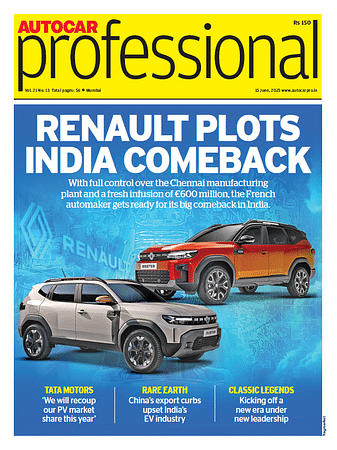China's Rare Earth Export Restrictions May Delay India's EV Penetration: India Ratings and Research
Broader automotive sector remains resilient despite supply chain constraints.
India Ratings and Research has assessed that China's export restrictions on rare earth magnet elements could delay electric vehicle penetration in India, though the immediate impact on overall automotive sales volumes in FY26 is expected to remain limited due to the country's low EV penetration levels.
The restrictions affect critical components used in EV motors and batteries, with rare earth magnets constituting approximately 30 percent of EV motor costs. India's e-mobility market has been experiencing rapid growth, with e-passenger vehicles and e-two-wheelers recording 18 percent and 21 percent year-on-year growth respectively in FY25, according to Vahan Dashboard data.
Current inventory levels provide automakers and component manufacturers with supplies for one to 1.5 months. However, prolonged restrictions could disrupt automotive production plans, particularly affecting India's e-mobility objectives for FY26.
"India's EV penetration is low, although accelerating at a rapid pace. Rare earth magnets are majorly used for motors and batteries, two of which are the core components of an EV. A prolonged restriction on the import of these components could hinder EV penetration in the country. In contrast, the quantum of rare earth magnet elements used in ICE components is fairly less and given their alternatives available, the overall production of ICE vehicles is unlikely to be material," stated Shruti Saboo, Director at India Ratings & Research.
The impact varies significantly between vehicle types. India's EV market penetration remains below 3 percent for passenger vehicles and approximately 6 percent for two-wheelers, limiting the overall effect on automotive sales volumes.
Internal combustion engine vehicles face lower risk due to reduced rare earth magnet requirements compared to electric vehicles. While neodymium-iron-boron magnets are used in certain ICE components, the quantities required are substantially less than those needed for EVs or hybrid vehicles.
Industry responses to supply chain disruptions may include importing fully assembled components rather than individual rare earth elements. This approach could increase working capital requirements and production costs, though India Ratings considers this manageable given the strong balance sheet positions of automakers and component manufacturers as of FY25.
The restrictions present particular challenges for e-two-wheeler manufacturers. Importing fully assembled components may render vehicles ineligible for FAME-II scheme subsidies due to non-compliance with localisation requirements under the Phased Manufacturing Plan. This could significantly impact pure e-two-wheeler original equipment manufacturers, while companies with diversified portfolios including ICE vehicles may face less severe consequences.
Supply chain diversification outside China appears limited due to China's control over 90 percent of global processed rare earth element production. Alternative strategies include modifying vehicle offerings or utilizing different magnet grades, though these approaches may compromise performance and require time-consuming design changes.
Long-term solutions under consideration include developing domestic production capabilities for critical materials, with potential government fiscal incentives to attract private investment. India also holds significant rare earth reserves, ranking fifth globally with approximately 6.9 million metric tonnes according to the US Geological Survey 2024.
The global impact extends beyond India, with the United States reportedly pursuing bilateral trade agreements and European component manufacturers receiving necessary approvals. China accounts for approximately 30 percent of global automotive component production and serves as a major exporter of batteries, electric motors, semiconductors, and electronics.
India represents the fourth-largest automobile manufacturer globally, producing 6 million vehicles annually according to a recent NITI Aayog report. The country imported approximately USD 20.9 billion worth of components in FY24, with 29 percent sourced from China, representing around USD 6 billion in trade value.
Industry estimates suggest China may consider clearing applications before global inventories deplete, as major disruptions in automotive production could negatively impact demand for Chinese-manufactured components across multiple sectors.
RELATED ARTICLES
“Missed Very Dearly”: Chandrasekaran Pays Tribute to Ratan Tata at Tata Motors AGM Amid Tata Group Crisis
Chandrasekaran balances grief and leadership at Tata Motors AGM as Tata Group confronts twin tragedies — the Air India c...
JLR May Face £1.6 Billion Hit from US Tariffs: N Chandrasekaran
JLR could face a £1.6 billion hit from US tariffs, with mitigation strategies expected to reduce the impact to £600 mill...
Tata Motors Not Facing Rare Earth Supply Issues for Now, Exploring Alternate Sources: Chandrasekaran
Tata Motors remains unaffected by China's rare earth export curbs for now, with Chairman Chandrasekaran confirming stabl...





 By Shruti Shiraguppi
By Shruti Shiraguppi
 20 Jun 2025
20 Jun 2025
 298 Views
298 Views





 Ketan Thakkar
Ketan Thakkar


 Darshan Nakhwa
Darshan Nakhwa


